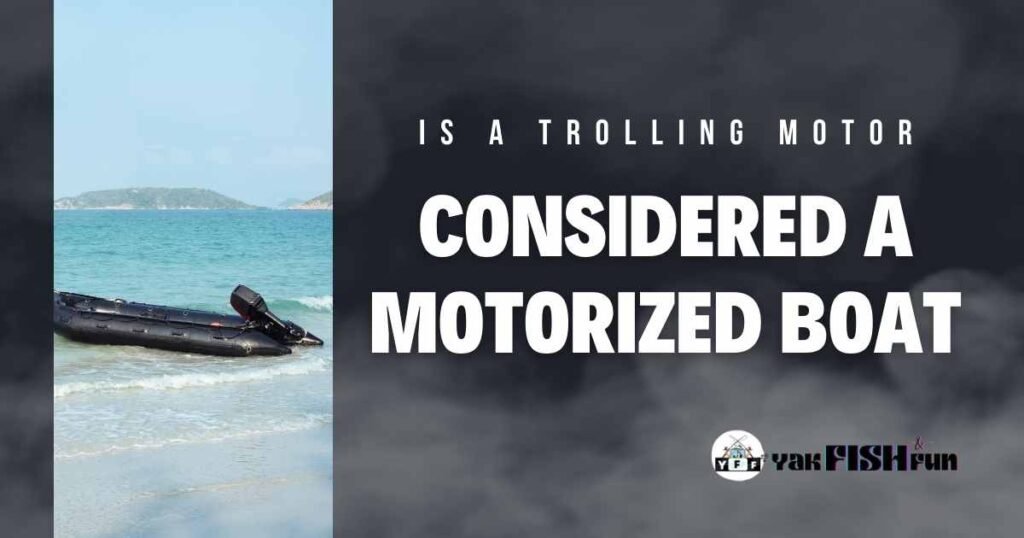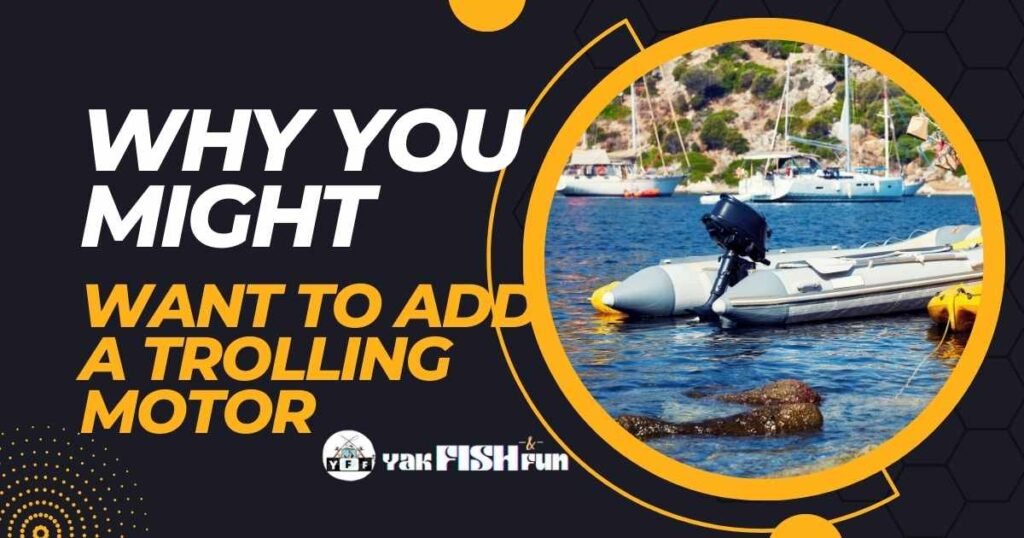A trolling motor is an electric or gas-powered device used to propel boats at low speeds for fishing or maneuvering purposes. It is typically mounted on the bow or stern of a watercraft and controlled by the paddler. Traditional motorized boats rely on internal combustion engines for primary propulsion.
But have you ever wondered whether a trolling motor is considered a motorized boat? It’s an interesting question that often leaves people scratching their heads.
In short, the answer is not. A trolling motor is not considered a motorized boat. But from a legal standpoint, the classification of trolling motors as motorized boats can vary depending on regional regulations. In some areas, trolling motors are considered separate from traditional motorized boats like outboard motors. They may be exempt from certain boating regulations that apply specifically to larger watercraft.
However, it’s important to consult local boating authorities or review specific legislation for accurate information regarding your location. Let’s find out more!
Table of Contents

Regulations in different regions regarding this classification
Boating regulations differ across regions. While some jurisdictions consider them distinct entities, others may require registration and adherence to specific rules applicable to all motorized vessels. For example:
- Inflatable boats: In certain places, you might need to register your inflatable boat if it has a trolling motor attached to it.
- Paddle boats: In some places, they might think of paddle boats with trolling motors as boats with motors on the water.
- Sailboats: If sailboats have an extra electric or gas-powered trolling motor, there might be extra rules they need to follow.
- Canoes: In some places, if you put trolling motors on canoes, they might have to follow the rules for motorboats.
Boaters must familiarize themselves with local laws and guidelines concerning boat registration, speed limits, safety equipment requirements, and any other relevant stipulations related to using a trolling motor.
Differences Between Trolling Motors and Motorized Boats
People who love boating and fishing know there are many different kinds of boats you can use on the water. Two common ways to move these boats are with trolling motors and motorized boats. Even though both help you move on the water, they are different in how they are made, what they do, and when you might use them.
Let’s explore how they differ.
Primary Function
Trolling motors are mostly made for precise and gentle movement in the water, and you usually find them on fishing boats. They’re great for moving slowly and quietly, which is perfect for fishermen who want to stay in one spot while fishing or slowly move to catch fish.
On the other hand, motorized boats are more flexible and can be used for lots of different things. They have bigger engines, usually powered by gasoline or diesel, and can go really fast. They’re good for all sorts of activities like getting around, doing water sports, or just relaxing on the water.
Propulsion
Trolling motors are electrically powered and employ a propeller or impeller to generate thrust. They are typically mounted on the bow or stern of a boat and are controlled by the operator on board. On the other hand, motorized boats are equipped with internal combustion engines, which can be inboard or outboard. These engines rely on gasoline or diesel fuel as their energy source, providing the primary means of propulsion.
Speed and Operation
Trolling motors are made to work at slow speeds, usually from really slow to not too fast. They’re not good for going really fast, but they’re great for going at a gentle pace, which is perfect for fishing.
On the other hand, motorized boats are known for being able to go at different speeds. They have big engines and are designed to go fast, making them great for having fun on the water, getting from one place to another, and doing water sports.
Noise Level
One important thing about trolling motors is that they are very quiet. This is really important for people who fish because it helps avoid scaring away the fish when they want to stay in one spot or move slowly.
But motorized boats, especially the ones with strong engines, can be quite noisy because they use engines that burn fuel. This noise can be a problem when you want a peaceful experience and loud sounds can disturb it.
Size and Type
Trolling motors are usually small and light, made to be easily attached to smaller boats like fishing boats, canoes, or kayaks. They work well with these smaller boats.
On the other hand, motorized boats come in all sorts of sizes and types. Some are small for just one or two people, while others are really big. They’re made to fit different purposes and serve all kinds of people who love boating.
Power Sources
- Electric motors primarily power trolling motors.
- Motorized boats typically use internal combustion motors, such as gas motors.
Propulsion Methods
- Trolling motors rely on electric power to propel the boat.
- Motorized boats utilize combustion engines for propulsion.
Size Differences
- Trolling motors are generally smaller and more compact in size.
- Motorized boats tend to be larger and have multiple motor counts.
Types of Trolling Motors for Kayaks
There are various options available to suit your needs. Whether you prefer electric-powered motors or gas-powered alternatives, understanding the features and requirements can help you make an informed decision.
Electric Trolling Motors
Many kayak enthusiasts like using electric trolling motors because they are quiet and good for the environment. These motors run on batteries, which are a clean and efficient power source for your kayaking trips. Here are some types of electric trolling motors that work well with kayaks:
- Transom-Mount Motors: These motors are designed to be attached at the back (stern) of the kayak. They are easy to install and make it simple to control your kayak.
- Bow-Mount Motors: These motors are mounted at the front (bow) of the kayak. They give you better control and stability when you’re kayaking in different water conditions.
- Hand-Controlled Motors: Equipped with hand-operated steering mechanisms, these motors allow precise control over speed and direction.
Gas-Powered Alternatives
Although less common for kayaks, gas-powered trolling motors can be an option for those seeking higher horsepower ratings or longer-range capabilities. However, they tend to be heavier and noisier compared to their electric counterparts. Some gas-powered alternatives include:
- Small Outboard Engines: Small outboard engines are designed for little boats like rowboats or paddleboats. They give you more power, but you need to be careful with how you use fuel.
- Portable Gasoline Trolling Motors: Portable gasoline trolling motors are small and made just for kayaks. They are lightweight, so they’re easy to carry, and they can make your kayak go faster and work better without being hard to move around.
When you pick a trolling motor for your kayak, think about how much power it needs to push your kayak, depending on its size and where you want to go fishing. Also, make sure your battery can provide enough voltage for the motor to work properly.
Bottom Line
So, is a trolling motor considered a motorized boat? The answer is no. While a trolling motor is indeed a type of motor used in boating, it does not classify the vessel as a motorized boat. Trolling motors are typically electrically powered and designed to provide propulsion at low speeds, making them ideal for fishing or maneuvering in shallow waters. They are often used as auxiliary motors on kayaks or small watercraft.


